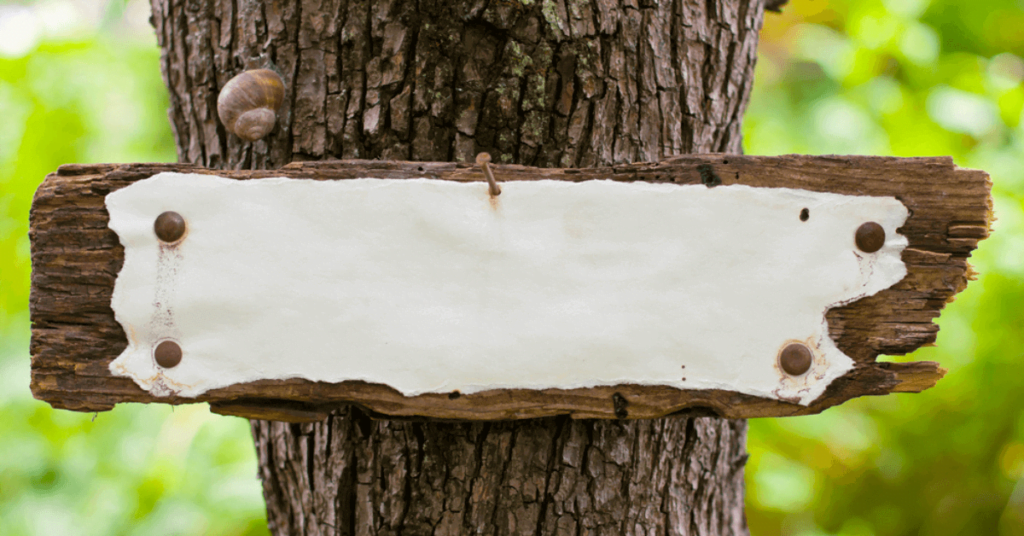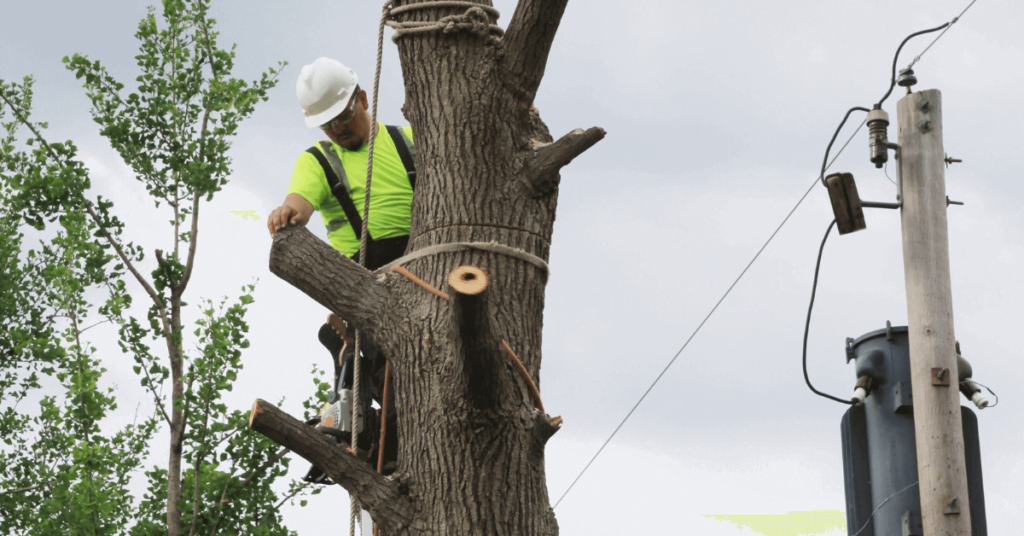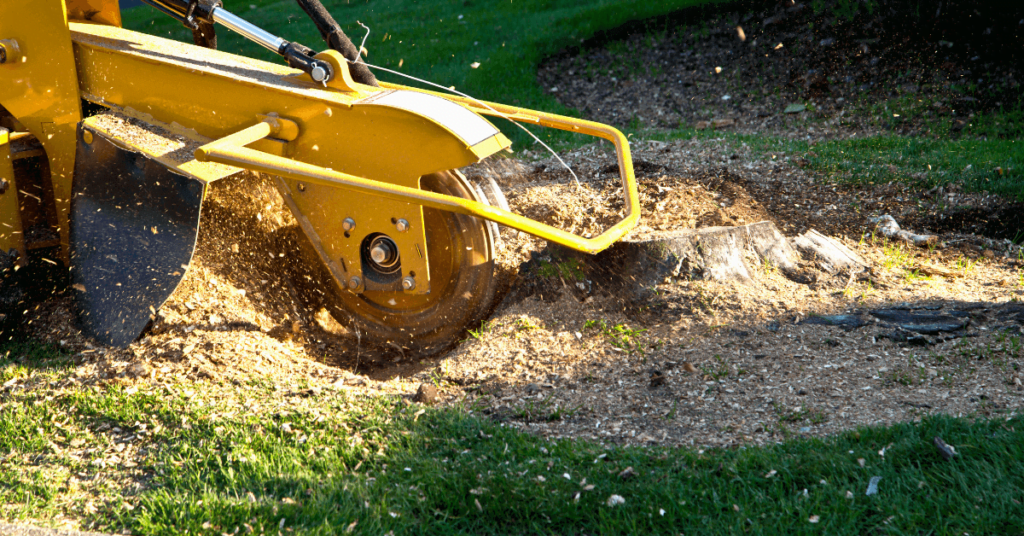It’s common for gardeners, landscapers and even DIY-ers to put nails into trees to hang decorations or secure support beams or trellises. But Is it ok to put nails in trees? Is it safe for the tree? How can you tell if a tree needs nails or not? These are all important questions that must be considered before taking any action involving putting nails into a tree.
In this post, we’ll explore all these questions and how to use tree nails safely and effectively. We’ll also take a look at the alternatives to using tree nails. So, keep reading!
Is it OK to put nails in trees?
In general, it is not recommended to put nails or screws in trees. It can be damaging to the tree’s bark and sapwood, causing infection, decay and rot.
In addition, drilling holes in the trunk of a tree can create entry points for disease and pests. Nails also have the potential to girdle a tree trunk and weaken the structure of the tree. Furthermore, nails can interfere with a tree’s ability to absorb essential nutrients from its environment.
For decorative purposes, it is usually preferable to hang decorations or birdhouses from branches rather than putting nails in trees. If a nail is necessary for attaching something to a tree, use an eye hook or strap with a wide, flat washer that won’t damage the bark.
Be sure to remove any nails when they are no longer needed. It is important to be mindful of the health and safety of trees in your yard and local parks.
What are tree nails and what do they do?
Tree nails also known as tree bolts or lag screws, are strong metal fasteners used to secure two pieces of wood together. They are most commonly used to secure tree trunks together, such as when constructing a raised bed or terraced garden. They can also be used to attach things like arbors, trellises and gazebos to a tree trunk.
Tree nails come in various sizes, shapes and lengths to accommodate different sizes of trees and different types of structures.Tree nails are typically made from steel, but can also be found in brass, bronze and other metals.
They are designed to penetrate deeply into the wood, preventing them from coming loose or being damaged by extreme temperatures and weather conditions. Tree nails should be installed by a professional tree surgeon or another qualified person to ensure they do not damage the tree and are properly secured.
How can you tell if a tree needs nails or not?
There are a few signs that indicate when a tree may need nails, including:
- Inspect the condition of the tree: Look at the trunk and branches for signs of rot or decay, weak points and splits in the wood. Also, check for signs of insect damage or other environmental factors that may weaken the tree’s structure.
- Check the size of the tree: If the tree is too large or heavy, you may need to use nails to secure it in place.
- Consider the type of tree: If the tree is a softwood, it may not need nails to secure it. However, hardwoods require more support, so nails may be necessary.
- Check for any signs of movement: Look for gaps or other signs that the tree is not securely attached to the ground. If you notice any movement, nails may be required to secure it in place.
- Consult a professional: If you are unsure about whether or not a tree needs nails, it is always best to contact an arborist for advice. An experienced professional can assess the condition of the tree and provide recommendations for how to best secure it.
By following these steps, you can determine whether or not a tree needs nails to stay secure in the ground.
How to use tree nails safely and effectively?
- Make sure that the tree nail is the correct size for the job; it should be slightly thicker than the diameter of the hole to ensure a secure fit.
- Drill an appropriate-sized hole into the wood before inserting the tree nail, otherwise, it will damage the wood.
- Use a mallet to tap the nail into place; do not use a hammer as this may cause too much force and damage the tree.
- Make sure the nail is not driven too deep; it should only be embedded about halfway for maximum security.
- Avoid driving nails too close to the bark as this can cause girdling and restrict the tree’s movement of water and nutrients.
- Use a sealant to cover the nail and protect it from moisture and decay organisms.
Additionally, regularly inspect the tree nails to make sure they are secure and replace them if necessary. By following these steps, you can ensure that tree nails are used safely and effectively to secure trees without causing any damage.
What are risks of using tree nails improperly or too many times on a single tree?
Tree nails can be a useful tool for attaching cables, braces and other devices to trees to provide additional support. However, improper use or overuse of tree nails can cause serious damage to the tree. Here are some of the risks associated with tree nail use:
- Loss of Structural Integrity: Improperly placed or too many tree nails can weaken the tree’s structural integrity, making it more prone to storm or wind damage.
- Decay: Overusing or improperly placing tree nails can create entry points for decay organisms, such as fungi and bacteria. This can lead to significant damage over time.
- Infections: Tree nails can also cause physical wounds in the tree that may become infected, leading to further damage.
- Girdling: Tree nails that are placed too close to the bark can cause girdling, which is when the bark gets constricted and restricts the movement of water and nutrients up and down the tree. This can lead to serious damage or even death of the tree. By using tree nails properly, you can help ensure the health and longevity of your trees.
Alternatives to using tree nails
There are many alternatives to using tree nails for securing trees on slopes. These include the use of guy wires, soil stakes, root binding and tree anchoring systems.
1) Guy wires
Guy wires are steel cables that are attached to Deadman anchors, which are buried deep into the ground on the lower side of the slope. The cables are then attached to the tree trunk and can be tightened as needed.
2) Soil stakes
Soil stakes are large wooden stakes that are driven into the ground, then tied to the tree trunk with rope or wire. This method is best used in soils with low bearing capacity and for trees that are not too large, as larger trees may need more support.
3) Root binding
Is a method of tying the roots of a tree to a stake or rock that is buried in the ground on the lower side of the slope. This method helps to stabilize the tree and prevents it from toppling over.
4) Tree anchoring systems
Tree anchoring systems are made up of cables, straps and/or anchors that are attached to the tree’s roots or trunk and then buried in the ground. The anchoring systems are designed to provide maximum stability and prevent the tree from toppling over.
Final Words
Overall, it is not recommended to put nails in trees as it can cause damage that may not be reversible. Tree wounds caused by nails can invite insects that can weaken or kill the tree. If you must use nails to hang something, consider using other materials such as hooks, ropes, string or other fasteners that can be removed without causing damage to the tree.
Trees should always be treated with care and respect as they are vital to the health of our environment. If you are unsure of how to properly hang something in a tree, it is best to consult an expert for advice. We hope this article has helped you understand the risks associated with putting nails in trees. Thanks for reading!



